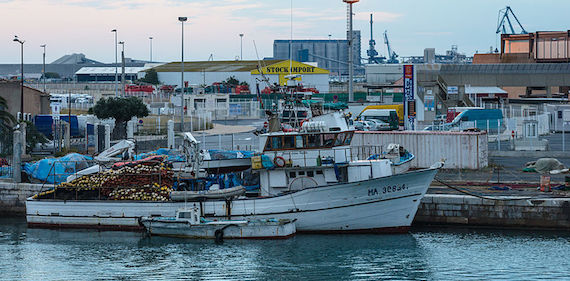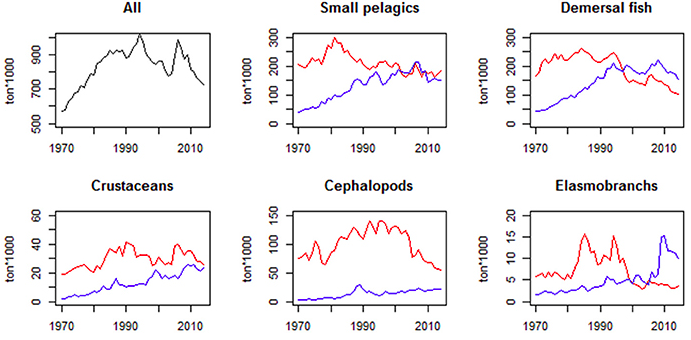 Reference: Colloca F, Scarcella G and Libralato S (2017) Recent Trends and Impacts of Fisheries Exploitation on Mediterranean Stocks and Ecosystems. Front. Mar. Sci. 4:244. doi: 10.3389/fmars.2017.00244
Reference: Colloca F, Scarcella G and Libralato S (2017) Recent Trends and Impacts of Fisheries Exploitation on Mediterranean Stocks and Ecosystems. Front. Mar. Sci. 4:244. doi: 10.3389/fmars.2017.00244
ABSTRACT
This review focuses on the recent data on Mediterranean fishing fleets and landings, results from stock assessments and ecosystem models to provide an overview of the multiple impacts of fishing exploitation in the different Mediterranean geographical sub-areas (GSAs). A fleet of about 73,000 vessels is widespread along the Mediterranean coasts. Artisanal activities are predominant in South Mediterranean and in the eastern basin, while trawling features GSAs in the western basin and the Adriatic Sea. The overall landings of fish, crustaceans and cephalopods, after peaking during mid 90s at about one million tons, declined at about 700,000 tons in 2013. However, while landings are declining in EU countries since the 90s, in non-EU countries a decreasing trend was observed only in the last 5–10 years. The current levels of fishing effort determine a general overexploitation status of commercial stocks with more than 90% of the stock assessed out of safe biological limits. Indicators obtained from available ecosystem models were used to assess the sustainability of the fisheries. They included primary production required to sustain fisheries (PPR), mean trophic level of the catch (mTLc), the loss in secondary production index (L index), and the probability of the ecosystem to be sustainably exploited (psust). In areas exploited more sustainably (e.g., Gulf of Gabes, Eastern Ionian, and Aegean Sea) fishing pressure was characterized by either low number of vessels per unit of shelf area or the large prevalence of artisanal/small scale fisheries. Conversely, GSAs in Western Mediterranean and Adriatic showed very low ecosystem sustainability of fisheries that can be easily related with the high fishing pressure and the large proportion of overfished stocks obtained from single species assessments. We showed that the current knowledge on Mediterranean fisheries and ecosystems describes a worrisome picture where the effect of poorly regulated fisheries, in combination with the ongoing climate forcing and the rapid expansion of non-indigenous species, are rapidly changing the structure and functioning of the ecosystem with unpredictable effects on the goods and services provided. Although this would call for urgent conservation actions, the management system implemented in the region appears too slow and probably inadequate to protect biodiversity and secure fisheries resources for the future generations.
Figure

Trend in annual landings of small pelagics, demersal fish, crustaceans, cephalopods, and elasmobranchs in EU (red line) and non-EU (blue line) Mediterranean GSAs. Data were retrieved from the GFCM capture fisheries database (http://www.fao.org/gfcm/data/capture-production-statistics/en/?platform=hootsuite).
